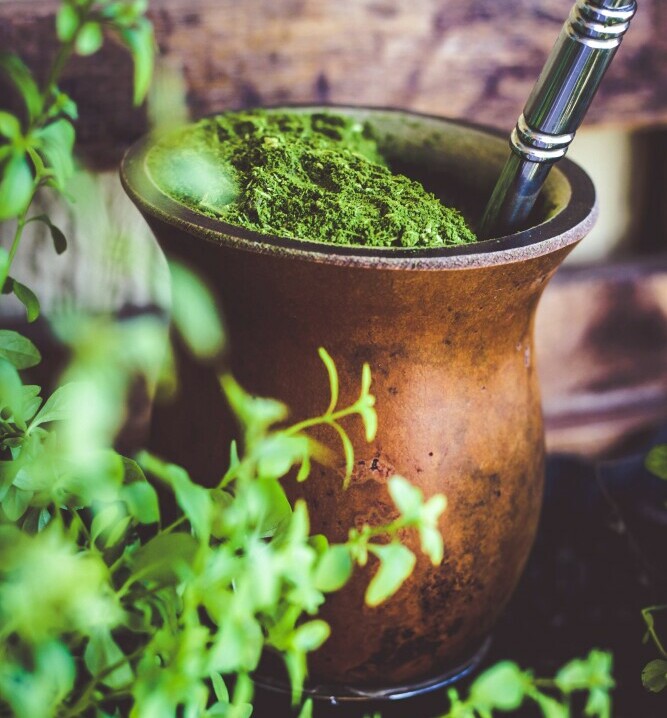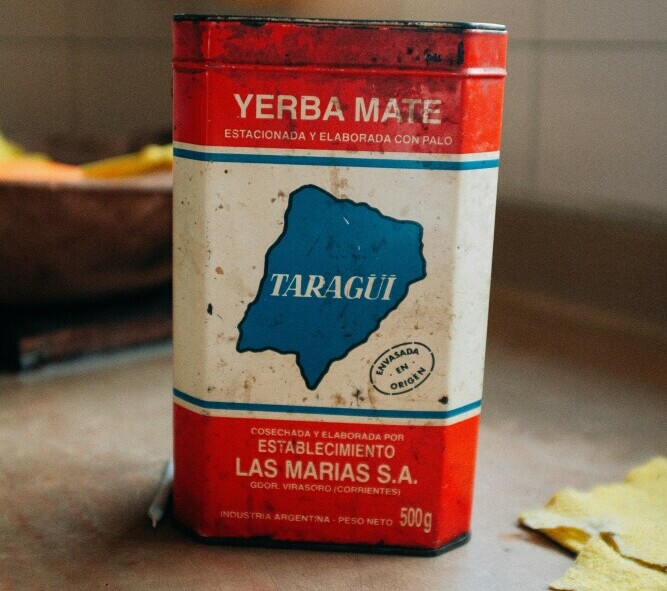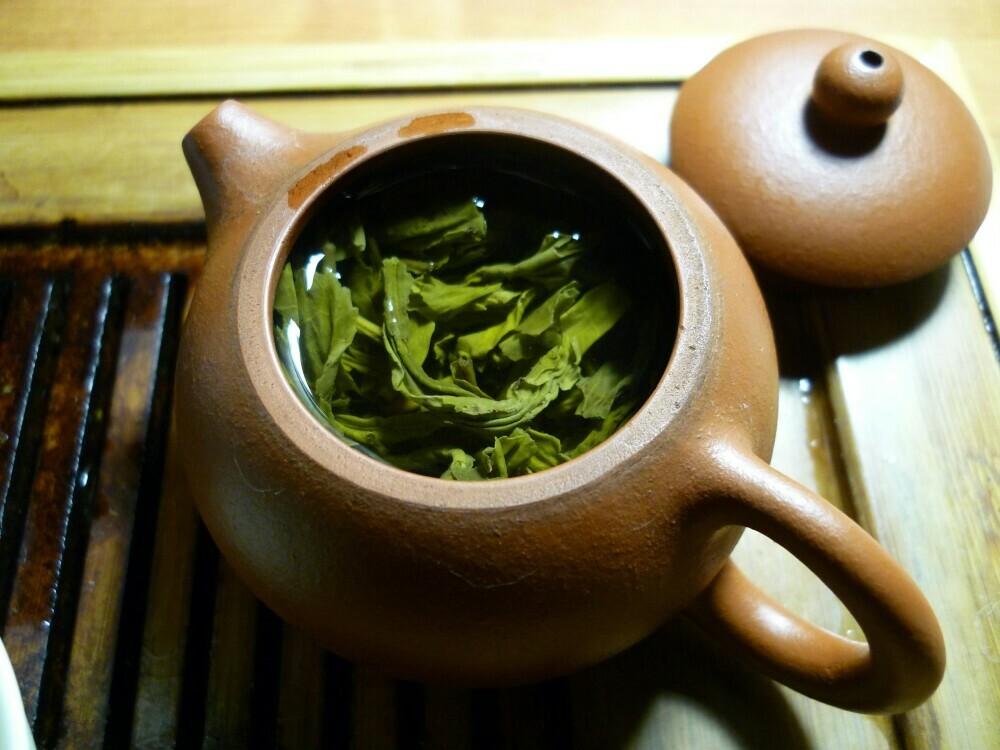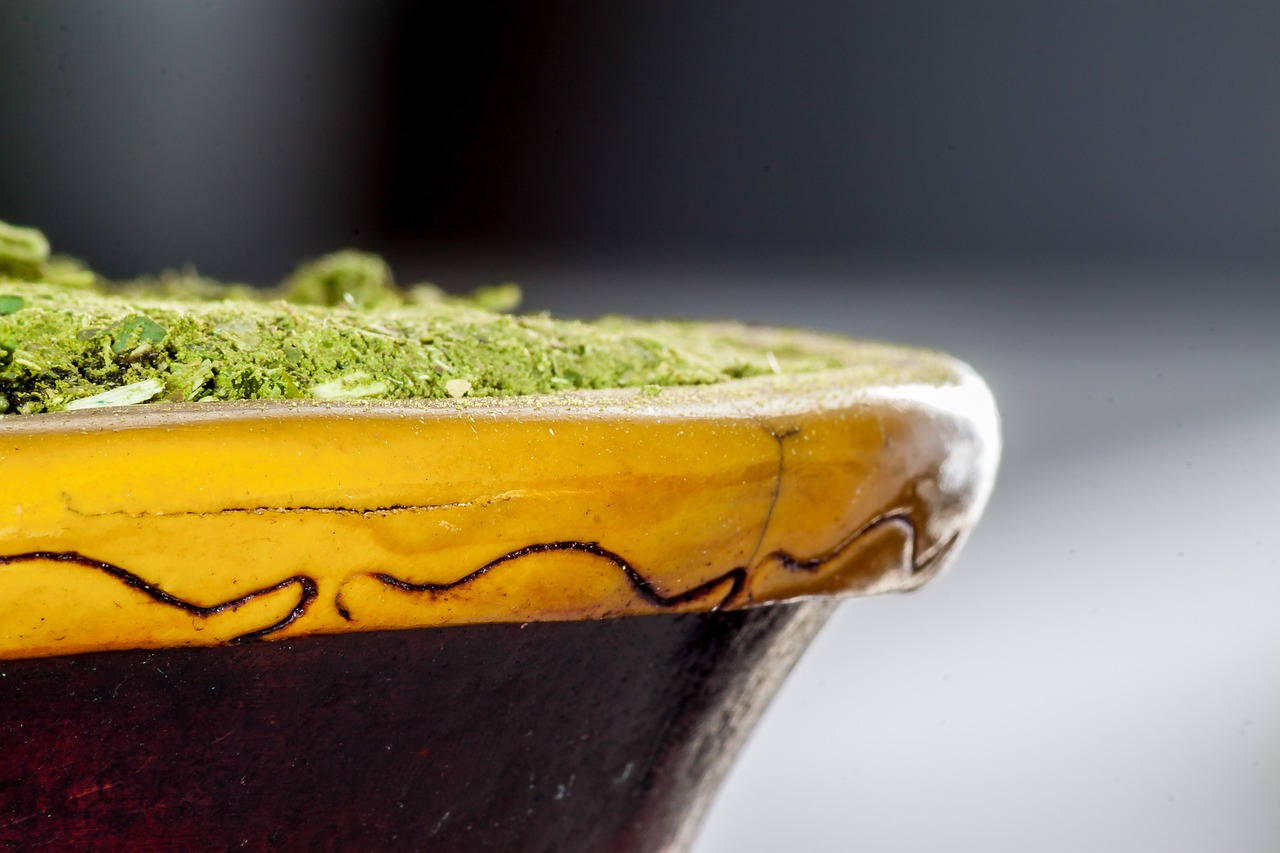Introduction to Yerba Mate and Green Tea: Beverages with a Cult Following
Discussing ” Yerba Mate Vs Green Tea “, Yerba Mate and Green Tea have become more than just beverages; they have gained a devoted following across the globe. These drinks come from different parts of the world and are now integral to many cultures.
Brief History of Yerba Mate and Green Tea
Yerba Mate is a beverage that originates from South America. It is made using the leaves of the Ilex paraguariensis plant and has been a popular drink in Argentina, Uruguay, Paraguay, and Brazil for centuries. The Indigenous Guaraní people of Paraguay were the first to consume Yerba Mate and believed it to be a divine gift.
Green Tea, primarily grown in Asia and Africa, is made from Camellia Sinensis. It is a daily beverage in many Asian countries and is considered a cultural drink in Japan, China, Taiwan, India, Vietnam, and other countries.
Why They Are Not Just Beverages, But Cultural Phenomena

Yerba Mate and Green Tea hold significant cultural value beyond their role as beverages. South Americans embrace Yerba Mate as a primary drink, while it serves as a national beverage in Argentina, Paraguay, Bolivia, and Brazil. Similarly, green tea is a ubiquitous daily drink for individuals in Asian countries, and it has cultural significance in Japan, China, Taiwan, India, Vietnam, and other nations. The beverages are not solely enjoyed for their flavor but also their historical and cultural importance.
Rising Popularity in Health and Wellness Communities
Yerba Mate and Green Tea consumption have gained popularity in health and wellness circles over the past few years owing to their antioxidant characteristics and possible safeguard against heart ailments and cancer. The global sales of Yerba Mate are predicted to reach $2.18 billion in 2023, with a projected increase in demand of 5.7 percent over the next decade. The rising popularity of these beverages is a testament to their health benefits and growing acceptance within health and wellness communities worldwide. Ultimately, Yerba Mate and Green Tea are not just drinks but cultural phenomena with a rich history and an expanding following in the health and wellness communities. The distinct tastes, positive effects on well-being, and cultural importance elevate them from mere ingredients in our meals to integral components of our way of life.
Yerba Mate 101: Exploring the South American Brew

Yerba Mate is an herbal infusion from South America. It is known for its cultural significance and health benefits, making it a favorite among tea enthusiasts worldwide. This tea is made by infusing hot water with dried leaves from the yerba mate plant, and it has a deep connection to Latin and South American culture.
Origins and Cultural Significance of Yerba Mate
The Yerba Mate story is rooted in the ancient Guarani tribe, which lived in the heart of South America. According to the legend, the celestial Goddesses of the Moon and Cloud descended to Earth, but a jaguar threatened their safety. Fortunately, a Guarani native came to their rescue, and in appreciation, they gifted the tribe with the Yerba Mate tree. This divine encounter marked the beginning of Yerba Mate’s brewing tradition in the region, which would endure the test of time.
Traditional Methods of Preparation and Consumption
The most common and traditional way of consuming yerba mate is using a bombilla (a filtered straw) and a maté (a gourd or cup). First, the dried yerba mate leaves are placed directly into the cup or gourd and shaken to eliminate fine leaf dust. Then, the leaves are moistened with cool water, and the bombilla is inserted to complete the process.
Distinct Flavor Profile and Varieties
Yerba Mate has a unique taste that takes some getting used to. It is commonly characterized as earthy, robust, and slightly bitter, with hints of sweetness and sourness. As your taste buds mature, you may pick up on delicious undertones such as lemon, chocolate, honey, and other flavors.
Green Tea: The Antioxidant Powerhouse
Green tea originated in Southeast Asia, and it has become a popular beverage worldwide because of its antioxidant properties. The health advantages linked to green tea are closely connected to the existence of polyphenols, particularly catechins, which function as effective antioxidants.
History and Significance in Eastern Cultures
Green tea consumption in Japan dates back to the 8th century, when monks widely used it as a stimulant during meditation. In Argentina, the popularity of this beverage has fluctuated over the years as other drinks, such as coffee and tea, have become more prevalent in the market.
Differences in Green Tea Types and Brewing Techniques
All variations of green tea originate from the Camellia Sinensis plant. Chinese green tea types are typically characterized by a more earthy and roasted taste, whereas Japanese green tea types are known for their grassier and more vegetal flavor. Although the brewing methods may differ for every kind of green tea, they are generally similar.
Health-Promoting Compounds in Green Tea

Green tea is a potent, healthy drink that provides antioxidants and other beneficial compounds that can help improve brain function, support heart health, and protect against cancer. These compounds have bioactivity that could lower the risk of serious illnesses such as cancer, cardiovascular disease, and neurodegenerative disorders.
Nutritional Showdown: Yerba Mate versus Green Tea
In health and fitness, two drinks have been competing for the number one position—yerba Mate and Green Tea. Both are renowned for their nutritional advantages, but how do they compare? Let’s explore this in detail.
Comparative Analysis of Nutritional Content
Yerba Mate and Green Tea are both highly nutritious beverages. Yerba Mate is a versatile herbal tea popular in South America, while Green Tea is a staple in many Asian countries and is renowned for its numerous health benefits.
Vitamins, Minerals, and Antioxidant Levels
Yerba Mate contains 196 active compounds, which include 24 minerals, vitamins, antioxidants, and 15 amino acids. Green tea, on the other hand, has fewer active compounds (144) but still has a rich supply of vitamins and minerals. Both drinks are abundant in antioxidants, which are beneficial to the body. Yerba Mate contains several antioxidants, such as xanthines, caffeoyl derivatives, saponins, and polyphenols. Similarly, Green Tea is also rich in antioxidants, notably polyphenols.
Calorie Content and Weight Loss Claims
Yerba Mate and Green Tea cannot be considered miraculous weight loss remedies, but both have been connected to possible weight control advantages. The thermogenesis of both drinks can increase daily calorie burn by 80 to 100 calories. However, to shed one pound of fat, people must consume 3,500 fewer calories than they burn.
Caffeine Content: Stimulating Facts about Yerba Mate and Green Tea
Although the caffeine content of Yerba Mate and Green Tea may differ, they both contain caffeine. Yerba Mate has a consistent caffeine content, whereas the amount of caffeine in Green Tea may vary from minimal to high levels.
Understanding the Caffeine Levels in Both Drinks
Each 8-ounce serving of Yerba Mate contains roughly 30-50 milligrams of caffeine, while Green Tea has an average of 20-45 milligrams per 8-ounce serving. The amount of caffeine in both beverages is influenced by the brewing process.
Effects on Energy Levels and Alertness
Yerba Mate and Green Tea both have caffeine, which has the potential to heighten energy levels and enhance attentiveness. People who regularly consume these beverages claim that Yerba Mate provides a similar boost in alertness to coffee but without undesirable jitters.
Considerations for Caffeine Sensitivity
If you are sensitive to caffeine, it is essential to consider the effects of Yerba Mate and Green Tea. Yerba Mate has a caffeine content higher than Green Tea, which may result in side effects such as insomnia or nervousness. However, Green Tea contains less caffeine, making it a more suitable option for individuals with caffeine sensitivity.
Both Yerba Mate and Green Tea have unique health benefits that should be considered. Ultimately, the choice between the two depends on personal preferences and individual health goals. Whether you are an avid tea drinker or a Yerba Mate enthusiast, both beverages can be a fantastic addition to a healthy lifestyle.
Health Benefits and Healing Properties: What Science Says
Yerba Mate and Green Tea are both highly regarded for their health benefits and have been extensively studied by scientists. They contain antioxidants and essential nutrients, such as xanthines, caffeoyl derivatives, and polyphenols. Compounds with anti-inflammatory and cholesterol-reducing properties have been linked to a decreased risk of several illnesses. Their capacity to encourage good health is a widely recognized attribute of these substances.
Research on the Health Benefits of Each Beverage
Studies indicate that Yerba Mate has the potential to improve physical performance, increase energy levels, and aid in weight management. Additionally, it has been discovered to enhance antioxidant capacity by elevating serum levels of PON-1, an enzyme that possesses antioxidant properties. On the contrary, Green Tea is widely recognized for its possible advantages in promoting cardiovascular health and managing obesity.
Potential for Disease Prevention and Management
Studies have shown that Yerba Mate and Green Tea can help prevent and manage diseases. Yerba Mate is known for its anti-inflammatory, cardioprotective, and anti-diabetic properties and has been found to increase the levels of HDL-c, which is considered the “good” cholesterol. Green Tea is also recognized for its potential to protect against heart disease.
Immune System Support and Other Healing Properties
Polyphenols and flavonoids are abundant in Yerba Mate, which can help fortify the immune system and shield it from illness. Green tea also has these advantageous compounds, which for its reputation as a nourishing drink.
Potential Risks and Side Effects: A Balanced View
Although Yerba Mate and Green Tea have several advantages for human health, they may also pose potential hazards and adverse effects. Overconsumption of these beverages could result in insomnia, irritation, and digestive problems. Furthermore, consuming vast quantities of Yerba Mate over an extended period has been associated with an elevated risk of certain forms of cancer.
Discussing Possible Negative Effects of Each Drink
It is worth mentioning that the possible adverse impacts of Yerba Mate and Green Tea are commonly related to overindulgence. Consuming such beverages in moderation is not associated with health issues for most adults. Nonetheless, people who have severe heart disease, uncontrolled high blood pressure, or heart arrhythmias should seek advice from a healthcare provider before consuming these drinks.
Recommendations for Safe Consumption Levels
Drinking daily tea with three grams of Yerba Mate leaves for up to 12 weeks is generally considered safe. There is no universally accepted safe consumption level for green tea. However, most sources indicate that consuming up to three cups daily is usually safe.
Addressing Concerns with Contaminants and Preparation Methods
Drying the leaves of Yerba Mate over a fire and then steeping them in hot water is the traditional method used to prepare this beverage, contributing to its unique flavor. However, there have been concerns about potential contamination with PAHs, especially benzo[α]pyrene. Despite this, Yerba Mate still has a wide safety margin and is considered a valuable functional food component. Similarly, Green Tea is generally safe when appropriately prepared, but it is advisable to ensure that tea leaves are sourced from reputable suppliers to avoid any potential contaminants.
Cultural Impact and Modern Consumption Trends
Yerba Mate and Green Tea have established a distinctive place in the beverage world. Although these two drinks have gained worldwide recognition, they originated from South America and East Asia. Their popularity is not limited to their refreshing taste but also due to their cultural significance.
How Yerba Mate and Green Tea have shaped social rituals
Yerba Mate, an indigenous drink from South America, is more significant than just a regular beverage. It represents camaraderie and connection. Preparing and sharing Yerba Mate cultivates a feeling of unity and social bonding. Similarly, Green Tea, rooted in ancient China, is closely linked with social conventions and traditions. These drinks have influenced social customs and play a vital role in strengthening community ties.
Their role in contemporary health movements
The beneficial effects of Yerba Mate and Green Tea on health have been widely studied and documented. Both are abundant in antioxidants and nutrients and have been associated with various health advantages, including improved physical performance, strengthened immunity, and a decreased likelihood of heart disease. Their importance in modern health movements is noteworthy as more people recognize their potential to promote wellness and vitality.
Influence on the global tea market
Due to their popularity, Yerba Mate and Green Tea have significantly impacted the global tea market. Sales of Yerba Mate are expected to witness a 5.7 percent compound annual growth rate and are projected to reach approximately US$3,797 million by 2033. Green tea comes in second place globally in terms of consumption after water. These trends depict the increasing influence of these drinks on the global tea market.
Sustainable and Ethical Considerations in Production
Forest preservation and income for rural producers are of utmost importance in producing Yerba Mate and Green Tea while considering sustainability and ethical factors. Yerba Mate’s production plays a significant role in promoting these values. The production of Green Tea is progressively transitioning towards sustainable techniques, prioritizing the reduction of environmental effects and guaranteeing equitable compensation to workers.
Environmental impact of growing practices
Growing Yerba Mate and Green Tea has a significant environmental impact that needs to be considered carefully. Yerba Mate plantations face substantial challenges because of soil erosion and degradation, which can worsen due to insufficient soil management practices. Conversely, Green Tea farming can result in deforestation and the loss of crucial ecosystems and biodiversity.
Fairtrade and ethical sourcing
Yerba Mate and Green Tea production rely heavily on fair trade and ethical sourcing practices. Several tea brands are adopting Fair Trade-Certified farms and direct trade transparency from farm to brand to ensure that the tea growers are treated fairly and that the tea we drink is ethically sourced. By doing so, they reinforce the idea that tea production must be conducted with ethical, sustainable practices.
How consumers can make responsible choices
Opting for sustainable and fair-trade tea brands can help consumers make responsible choices. Brands that use organic and non-GMO ingredients and loose-leaf tea, generally considered zero waste, can make a significant difference. Consumers can enjoy their favorite beverages and contribute to a more sustainable and equitable world by making informed choices.
Conclusion: Choosing Your Brew – Yerba Mate or Green Tea?
As we explore the realm of drinks, Yerba Mate and Green Tea emerge as two exceptional beverages with diverse cultural backgrounds and health advantages. However, deciding between the two can be challenging. Let’s investigate their main distinctions and similarities and how they correspond to individual tastes and ways of life.
Summary of Key Differences and Similarities
Yerba Mate and Green Tea are popular beverages from different plants and regions. Yerba Mate originates from South America and has a strong, grassy flavor. It is made from the Ilex Paraguariensis plant. Green Tea, on the other hand, is mild, green, and has an astringent taste. It comes from the Camellia Sinensis plant, primarily in Asia and Africa.
Yerba Mate and Green Tea are beverages loaded with antioxidants and nutrients, and research has linked them to several health benefits. Yerba Mate has a higher concentration of chlorogenic acid but does not contain catechins, while Green Tea is abundant in catechins. Both teas contain caffeine, but Yerba Mate has a higher caffeine content.
Guidance on Personal Preference and Lifestyle Alignment
Personal preference and lifestyle alignment are vital factors when deciding between Yerba Mate and Green Tea. Yerba Mate may be the ideal choice if you’re looking for a natural energy booster that provides cognitive benefits. However, Green Tea could be your top pick if you’re seeking a potent antioxidant-rich beverage that supports relaxation and immune health.
Encouragement for Readers to Try Both and Find Their Favorite
To decide which beverage suits you best, it is recommended that you try both and judge based on which one you prefer. Whether you are inclined towards the strong and intense taste of Yerba Mate or the delicate and rejuvenating characteristics of Green Tea, be sure that both herbal teas present unique health benefits. So why delay? Embark on this flavorful journey and explore your preferred blend today!
I would love to receive your comments down below in case of any.


Hello Sara,
Thank you so much for sharing this well-researched and informative analysis on Yerba Mate and Green Tea. It’s great to learn about the cultural significance and health benefits these teas offer, from their rich nutrient profiles to their moderate caffeine content. I appreciate the time and effort you put into this research. It’s been incredibly helpful and enlightening. Cheers to healthier beverage choices! As someone who believes that tea is a fantastic alternative to coffee, it’s encouraging to know that both Yerba Mate and Green Tea provide a gentle boost in energy without the intense jolt often associated with coffee. It seems like they truly are the healthier and more sustainable choice, especially considering the ethical sourcing practices adopted by their producers.
Hi Eric,
I am very glad you liked my post. Actually, speaking of Green Tea, I believe that we all should incorporate it into our daily diets due to its antioxidants. Thanks again, and take care.
Hi Sara,
I’m not really a “tea person, ” but I have consumed a couple of cups of green tea on long flights. I know they contain anti-oxidants, thus I choose them over soda.
I have no experience with yerba mate, but learning from your post of its benefits, hopefully one day, I can have a taste of this rich tea.
Thanks for this informative post.
Marita
Hi Marita,
Many thanks for your comment. I really am very glad that you found my post to be informative and beneficial. Thanks again, and stay safe.
What an insightful comparison between Yerba Mate and Green Tea! It’s fascinating to delve into the cultural, historical, and nutritional aspects of these two beverages. The rich traditions and health benefits associated with both Yerba Mate and Green Tea make them stand out not just as drinks but as cultural phenomena with global significance.
I’m particularly intrigued by the discussion on the distinct flavor profiles and brewing techniques of each tea, as well as their varying levels of antioxidants and caffeine content. It’s impressive to see how both beverages have carved out a niche in health and wellness communities, with their potential to aid in weight management and support overall well-being.
One question that comes to mind after reading this comprehensive overview is: How do the environmental sustainability practices differ between Yerba Mate and Green Tea production? Given the increasing demand for these teas, it’s crucial to consider their impact on the environment and ensure that responsible sourcing practices are upheld.
Overall, this article serves as an excellent resource for anyone looking to learn more about the cultural significance, health benefits, and environmental considerations surrounding Yerba Mate and Green Tea. I’m excited to continue exploring the world of herbal teas and discover the unique qualities of each blend.
Best regards,
Scott
Hey Scott,
I really do appreciate your insightful observation and the way you brought up the significance of environmental sustainability in the production processes of yerba mate and green tea! Both drinks, in fact, have major effects on culture and health, and their production processes greatly influence their environmental friendliness.
Smaller, family-run farms in South America are usually the ones growing yerba mate; these farms can use sustainable agriculture techniques like agroforestry to protect biodiversity. However, not every large-scale production will adhere to these rules.
Conversely, mainly grown in Asia, green tea frequently uses more intensive farming methods. However, many farmers are switching to sustainable methods, like using fewer pesticides and growing their crops organically.
Although scaling sustainably presents challenges for both industries, consumer demand and environmental awareness are driving a growing trend towards more environmentally friendly practices. To guarantee ethical sourcing, always search for certifications such as Rainforest Alliance or organic. I appreciate you bringing up this important aspect of drinking tea.